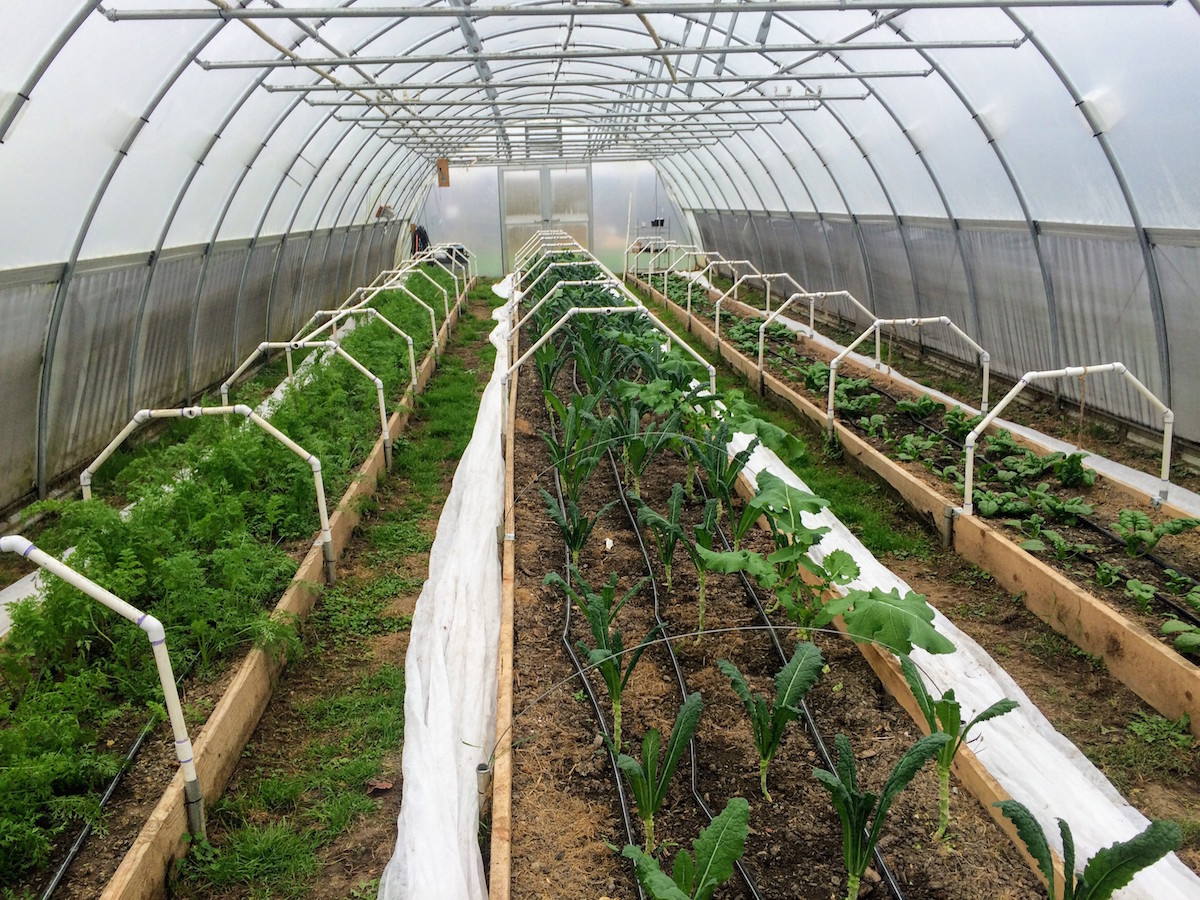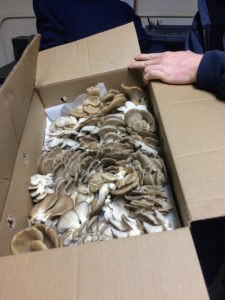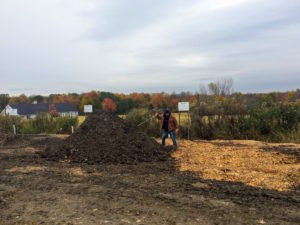Case Western’s Farm Grows Minds and Food

The farm at Case Western Reserve University in Cleveland is more akin to a land-grant institution’s research farm than the small but mighty student-run operations found on most Bon Appétit campuses.
Officially named the Squire Valleevue and Valley Ridge Farms, the area spans 400 acres, but only 4 acres combined are actually farmed, managed by six full-time farm staff and two maintenance team members. The two farming areas are connected by expansive forests, ponds, ravines, and even waterfalls, all open to the public for hiking and running.

Oyster mushrooms destined for Bon Appétit catering
The land serves many functions in addition to food production and recreation. There are indoor classrooms and labs as well as outdoor research spaces. In the last academic year, about 21 courses used the farms’ facilities in disciplines spanning from entomology and geology, to nursing and visual arts.
While the farm has been through various stages of food production since its start in 1919, efforts to use sustainable farming methods to grow and sell food to Bon Appétit began in earnest during the fall of 2009.
Over the past eight years, the farm’s growing spaces have expanded from a vegetable garden and herb spiral to a large greenhouse (including a room for hydroponics research), two new hoop houses, a vineyard, an apiary, and a mushroom cellar. This expansion has been possible in no small part due to the Bon Appétit team, whose purchases represent about 60% of the farm’s revenue stream and which has invested in major projects, such as the farm’s first hoop house in 2010.

Farm Food Program Coordinator Ryan Bennett taking the temperature of the compost pile
The most recent Bon Appétit farm partnership has been the expansion of their composting program. The farm has been transforming some of the Case Western kitchen scraps into compost for several years, but this past summer the college started working with a new, more consistent compost hauler, the Rust Belt Riders, which has allowed them to expand composting to all Bon Appétit kitchens.
In just one summer, compost production has increased threefold, and the larger volume means the farm can start accepting and breaking down meats and dairy. Farm Food Program Coordinator Ryan Bennett turns and takes the temperature of the piles daily. “We’re lucky to have someone who loves playing with compost,” Farm Director Dr. Ana Locci says. And with roughly 4,000 pounds of food scraps a month flowing from the kitchen into the farm, monitoring the compost heaps is no small task.
But Dr. Locci welcomes as many food scraps as Case Western can offer. If fact, there is talk of eventually expanding composting to front-of-house waste in some locations. The biggest obstacle is cleaning up the waste stream and making sure it is not contaminated with PLA plastics, which will not break down in the farm’s compost piles. For now, the farm team is thrilled about the recent composting increase. “It’s just beautiful,” Dr. Locci comments as she passes one of the five piles steaming in the cold morning air, a smoky indication of the warm microbial activity inside.